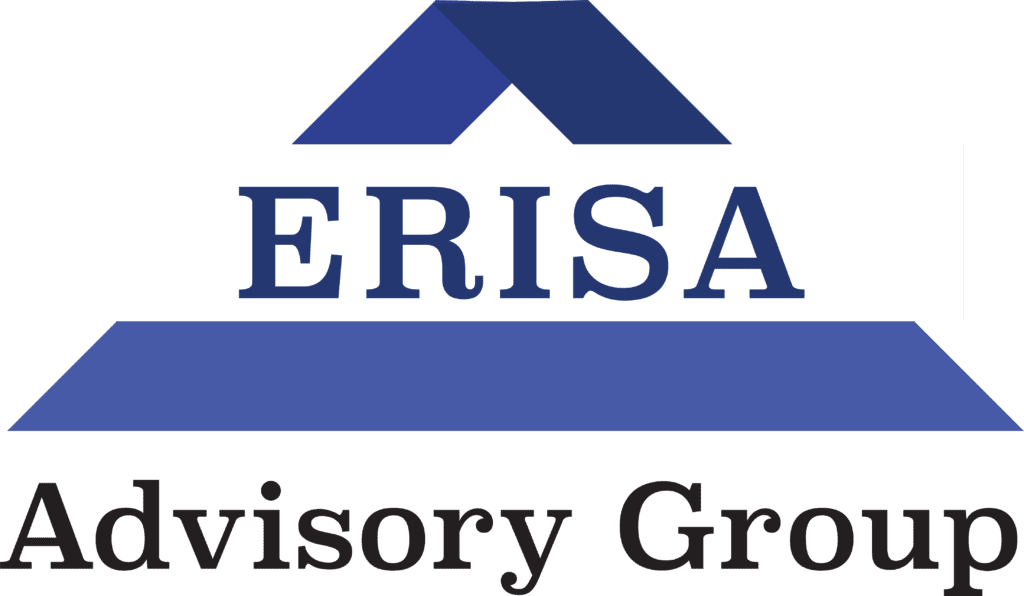ERISA INSIDER VOL. I, ED. VII: Why The EBSA Is Auditing More Plans This Year For ERISA Compliance Errors
Between 2017-2020 there’s been an upward trend of EBSA enforcement actions against Employee Benefit and Retirement Plans. Here’s why you could be a target for their next investigation or audit.
Dear Employer,
Did you know that over the last 4 years the Employee Benefits Security Administration (EBSA) has been rigorously investigating PEO’s, Trade Associations, Taft-Hartley Unions and Single Employers for ERISA compliance errors?
In the Fiscal Year ending in October 2020, EBSA restored over $3.1 billion dollars to employee benefit plans, and their participants and beneficiaries.
This is nearly a 3X increase from the $1.1 billion dollars in enforcement actions from 2017, and in the wake of COVID-19, we expect this upward trend to continue into 2021 and beyond.
The real question is:
Why, under an administration which has been very adamant about cutting government regulations, have we seen such an uptick in EBSA findings?
This newsletter is going to explain exactly why, and provide you with some important insight behind how the Department of Labor decides which organizations to investigate.
These 3 Government Agencies Are Responsible For Enforcing Title I of ERISA, And Selecting Organizations For A Plan Audit
The first thing to understand about ERISA audits for Health & Welfare Plans and Qualified Retirement Plans is who’s behind conducting them…
There are 3 primary agencies responsible:
1. The Internal Revenue Service
As you might expect, the IRS is heavily involved in reviewing the finances of Employee Benefit and Retirement Plans.
Just like with your personal or corporate taxes, the IRS is ruthless in enforcing every relevant section of the Internal Revenue Code with respect to your plan.
Each year when you file your annual Form 5500, you are providing the government with a clear picture of the expenses, investments and overall financial state of your organization’s plan.
This is one of the primary places the IRS will scrutinize to determine any irregularities or potential violations of the Code that you may have to answer for.
For more information, visit IRS.gov.
2. The Pension Benefit Guaranty Corporation (PBGC)
The PBGC was created under Title IV of ERISA and is responsible for initiating the termination of defined benefit plans that are found to be underfunded or insolvent.
This federally chartered corporation acts as a safety net to provide benefits for plan participants & beneficiaries whose employers can no longer do so.
While the PBGC does not conduct investigations for the government, it does perform “distress tests” to determine whether a Plan Sponsor has adequate funding to fulfill its obligations to their plan.
3. The Employee Benefits Security Administration (EBSA)
The EBSA is a government agency that operates under the US Department of Labor and is the primary body for enforcing compliance with Title I of ERISA.
Much like the IRS or other government agencies, EBSA has offices all across the country which are responsible for overseeing ERISA compliance in different regions.
Below is a map of the 10 regional EBSA offices:

Every year, EBSA publishes a report on its recoveries from enforcement actions against employers who committed civil and criminal violations under ERISA.
In 2020 alone, EBSA reported $3.1 billion dollars in restorations to employee benefit plans, participants and beneficiaries – as well as 1,122 civil investigations and 230 criminal investigations of Plan Sponsors and fiduciaries.
*See EBSA’s 2020 Fact Sheet for more details.
The DOL Is Incentivized By “Budget Metrics” To Conduct More Targeted Audits Of ERISA Plans
Under the Trump administration, the amount of enforcement recoveries by EBSA has increased nearly 3X since 2017.
This can be explained by the budget metrics that guide EBSAs activities.
The US Department of Labor is responsible for fulfilling certain requirements to achieve an increase in funding from Congress every year.
Various metrics are set for each of the regional offices, acting as a critical performance factor for Regional Directors and Managers.
From the perspective of these government officials, the result is very clear:
- Success = Bonuses, Promotions & Increased Budget
- Failure = No Salary Bonus & Close Monitoring from Congressional Oversight Committees
Here are some of the metrics the DOL uses to guide its EBSA activities.
Civil:
- Number of Cases Opened
- Litigation Referrals
- Cases Closed with Results
- Cases Closed without Results
Criminal:
- Cases Opened
- Cases Indicted
- Cases Closed
RECENT CASE: EBSA Fines Kentucky Bankers $1,561,818 For Violating Title I of ERISA
Last month on October 15, 2020, the US Department of Labor reported that an investigation by EBSA of the Kentucky Bankers Association, Participating Employer Committee (PEC), Association Healthcare Consortium Inc., and the current and former Trustees of the Kentucky Bankers Association Health & Welfare Benefit Program and the KBA Benefits Trust found them jointly and severally liable to pay $1,561,818 in losses to the trust.
The current and former trustees include Ballard W. Cassady Jr., W. Fred Brashear II, Neil S. Bryan, Burt Bellamy, and Jack W. Strother Jr.
EBSA’s investigation found these defendants guilty of violating ERISA “when they authorized KBA and its for-profit wholly owned affiliate, KenBanc Insurance Inc. (KBI), to receive impermissible insurance commissions, fees for administrative tasks, and reimbursements from the Trust’s assets for employee salaries and office space lease payments from Feb. 4, 2011, through Sept. 22, 2017.
During this period, multiple defendants simultaneously served as trustees of the trust and directors and officers of the KBA or KBI. EBSA found the defendants failed to ensure KBA and KBI did not receive more than their permissible direct expenses for services performed for the Trust. As a result, the defendants caused $1,489,231 in losses to the trust in addition to $72,587 in lost potential earnings.” (DOL News Release published on October 15, 2020.)
In addition, the Department of Labor also assessed a penalty of $312,363 against the defendants.
This is just one example of the many cases the EBSA investigates in a given year.
You Might Qualify As A Candidate To Be Investigated Under 1 of 5 National Enforcement Projects
Along with the yearly budget metrics, EBSA also has five National Enforcement Projects designed to identify specific plans with potential compliance issues:
1. Rapid ERISA Action Team (REACT)
REACT is designed to respond to media reports that demonstrate a company’s financial trouble, criminal indictments or bankruptcy claims.
As the acronym suggests, this program results in fast action from DOL investigators to see if these hot button issues are related to Employee Benefit and Retirement Plan compliance problems.
2. Major Case Enforcement
EBSA has said that it is focusing more investigative resources on fiduciaries and service providers with the greatest impact on the protection of plan assets and participant benefits.
In other words, Plan Sponsors and fiduciaries who manage massive plans for organizations like PEOs, Trade Associations and Unions are subject to higher scrutiny due to the sheer size of the plan and amount of participants & beneficiaries it covers.
3. Health Benefit Security Project (HBSP)
This program combines the former comprehensive National Health Enforcement Project with Affordable Care Act (ACA) provisions.
EBSA is focusing its efforts under this project on returning money to plans and their participants adversely affected by improper administrative practices, or the mishandling of plan funds.
EBSA continues its efforts to detect and correct violations found in Part 7 of ERISA.
4. Multiple Employer Welfare Arrangements (MEWAs)
EBSA has devoted significant resources to investigating and litigating issues connected with abusive MEWAs.
Many times, these problems are created by unscrupulous promoters who sell the promise of inexpensive health benefits, but default on their obligations.
EBSA places a particular emphasis on identifying abusive and fraudulent MEWAs.
5. Contributory Plans Criminal Project (CPCP)
The CPCP began in 2010 as EBSA’s first solely national criminal project.
To address the millions of American workers who share in the costs of employee benefits by contributing to employer-sponsored plans vulnerable to criminal abuse, this program was created to address all potential criminal violations related to these plans.
*For an updated list of EBSA’s National Enforcement Projects, see our ERISA Insider Newsletter from June 2021.
Obvious “Audit Triggers” That Are Guaranteed To Make The EBSA Spring Into Action
While reading about EBSAs budget metrics and various National Enforcement Programs might be intimidating, there are several obvious “audit triggers” you can be sure to avoid from popping up on their radar.
Below, we’ve listed 4 that you should be aware of:
- Media attention. Any media attention concerning your company’s financial troubles or potential criminal investigations will be the first indicator that your plan could contain potential ERISA compliance issues.
- Participant complaints or allegations. Equally as dangerous as media attention, an employee or participant who files a complaint with the Department of Labor will alert EBSA to potential legal compliance issues.
- Form 5500 errors. If you make a mistake on your annual Form 5500 that reflects financial distress with your plan, EBSA can potentially target you for a plan audit. (See our newsletter on Common Form 5500 Mistakes and How To Avoid Them here.)
- Referrals from other government agencies. Other government agencies, such as the IRS, that have reason to suspect your plan finances are suspicious or contain irregularities can refer you to EBSA for a potential investigation.
The best way to avoid these “audit triggers” or being a target of one of the DOL’s National Enforcement Programs is to be proactive and consult with an ERISA Independent Fiduciary to make sure your plan is legally compliant.
Consult An ERISA Independent Fiduciary To Help You Prepare For A Potential EBSA Audit Before It’s Too Late
At the ERISA Advisory Group, we always advise our clients to be proactive instead of reactive when it comes to ensuring compliance with their Health & Welfare or Qualified Retirement Plans.
If you are concerned that you may be subject to an EBSA audit, or are seeking a prudent expert in ERISA compliance to conduct a fiduciary overview of your plan, then contact the ERISA Advisory Group for a free consultation.
We have been helping Plan Sponsors and fiduciaries stay ERISA compliant since 1995, and are passionate about helping employers design the strongest plans for their participants and beneficiaries.
Perhaps we can help you too.
Click Here To Schedule A Free Consultation With The ERISA Advisory Group

